It seems that for every five new vehicles on the road, one is a pickup truck. These city-slicker trucks almost always have twin-row cabs, ride high on raised suspensions, and have roaring diesels under the hood. What’s the draw?
I drove the Tata Xenon XT 4×2 MT exclusively for several days, tested it for all it’s worth, to nail down why the pick-up truck is turning into a passenger vehicle, a passenger truck as it were. I drove it through extra-heavy homeward traffic on a Friday evening, took it on a daytrip to the southern coast of Batangas the next day, made the most of its cargo bed by giving kids a “barn-ride” to church on Sunday, and then filled it to the brim on Monday to haul over a dozen volunteers and their supplies over to a public school where they cleaned and repainted a playground.
C onclusion: if it’s a choice between a big brand compact sedan and this particular truck which goes for just PhP830,000 SRP, I’d go for the Tata Xenon any day. Two tons of truck is utterly practical, an expandable and retaskable thing that could carry up to a ton of cargo and/or people, leaving nothing and no one behind when the need occurs.
onclusion: if it’s a choice between a big brand compact sedan and this particular truck which goes for just PhP830,000 SRP, I’d go for the Tata Xenon any day. Two tons of truck is utterly practical, an expandable and retaskable thing that could carry up to a ton of cargo and/or people, leaving nothing and no one behind when the need occurs.
The expandables
The Xenon’s rear cargo deck is big enough to load oversized cargo with the tailgate up, even bigger and more versatile with the gate down (so long as you’re good at securing stuff with rope). You can opt for a camper shell of course, cover the cargo deck to make it lockable and secure, even more people-friendly, but I suggest that this be a snap-on affair that you can remove by yourself or with little assistance in case there’s tall cargo that needs hauling.
In good weather, an open deck can pinch hit to transport 7 to 8 people in addition to the 5 or 6 in the passenger cabin, that’s as long as the people in back don’t mind having just the big clear sky overhead. Ironically, those folks would mind it even less, God bless ‘em, when the rains bring a deluge, the lack of a roof above a trivial thing as long as there’s a solid truck underneath to get them away from ground zero.

The high-riding chassis might seem like overkill, like a tip of the hat to monster truck fandom, particularly when it’s mated to just a 4×2 drivetrain. But, from the driver’s point of view sitting nearly a meter above ground level, it’s the perfect thing on flaky infrastructure. Riding on the large tires that can be accommodated by a raised and reinforced suspension, it’s exactly what’s needed for a relaxed and confident drive on ill-kept roads where even manhole covers and drain grills are known to go missing. And when those road hazards suddenly get hidden under feet of floodwater, well, you get the picture. A high-riding chassis, it’s a great thing to have if you can get it.
Truck war
Big players have each and collectively declared that a truck war now ensues. There’s still normal rivalry, no hostilities, but with all eyes focused on the market for pickup trucks, the market for vehicles that are no longer the light-duty cargo-carriers they started out to be but what have become yet another type of passenger vehicle. Amidst all this, they’ve distilled the desires of their market and defined both the form and the substance of the modern pickup, the passenger truck.
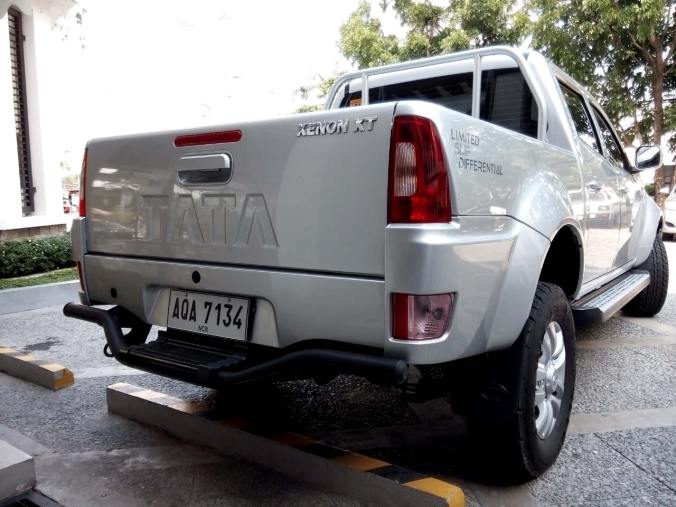
Pickups as passenger vehicles, you’d spot them as: (1) having two-row passenger cabs that’ll seat five; (2) being high riders, with ground clearance of over 200mm regardless of whether these are 4×4 off-roaders or 4×2 utilities; (3) sporting large tires on rims with diameters of 16” or more; and (4) being powered by diesels made efficient and with powerbands stretched out by the inclusion of some form of modern, high-pressure fuel injection and turbocharger arrangements.
And apparently, those touch points are enough for big brands to each field many variants. In fact, the more variants they have, the more successful they seem to be at gaining ground and getting market share. Top seller Ford has 13 different variants for their Ranger, based on choices of body fairings, engine, drivetrain, gearbox and passenger cabin sizes. Isuzu has 8 variants for their D-Max, up from 7 last year with the introduction of their new LT-X mid-range 4×2. Toyota and Nissan each have 7 variants for the Hilux and the new NP300 Navarra, respectively. Even Mitsubishi which had just introduced its next generation Strada already has 6 variants.
Old world veteran
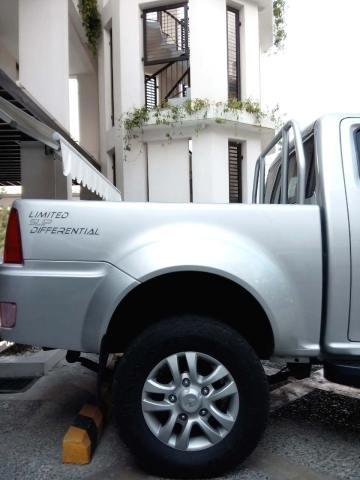 Now, into this melee, comes Tata of India … and with just two variants. Identical in all respects except for the drivetrain, the Tata Xenon XT 4×2 and 4×4 variants both have conventional 5-speed manual gearboxes, large 16” alloy wheels, are trimmed for mid-range privateer tastes, and ride high with 210mm of ground clearance. It seems that instead of spreading their assets to probe and engage the whole breadth of the market, they’re taking aim at the market’s meaty middle.
Now, into this melee, comes Tata of India … and with just two variants. Identical in all respects except for the drivetrain, the Tata Xenon XT 4×2 and 4×4 variants both have conventional 5-speed manual gearboxes, large 16” alloy wheels, are trimmed for mid-range privateer tastes, and ride high with 210mm of ground clearance. It seems that instead of spreading their assets to probe and engage the whole breadth of the market, they’re taking aim at the market’s meaty middle.
From the start, ever since they went active last year, Tata’s pitch has been bold yet self-effacing. They build durable vehicles ‘cause they need to. It’s an imperative that their vehicles be robust because their domestic market, India, has road conditions even harsher than ours. The Tata brand has been brandished for decades on vehicles plying skewed tracks cut out of Himalayan mountainsides, low and arid desert trails, and the bustling and bumpy scrabble of broken city pavement where these may exist.
When India’s Ambassador to the Philippines L.D. Ralte spoke at Tata’s “Big 7” launch to introduce their line-up of diesel-powered cars and trucks last year, he punctuated his endorsement of the utter reliability of Tata vehicles with a roundabout compliment to the Philippines. He said that since they find Tata’s seemingly indestructible vehicles reasonably priced in India, then these will surely seem even cheaper to potential buyers in the Philippines. Even if Tata isn’t well known yet in the Philippines, it’s famous, if not notorious, in other markets where they know that the heavy industry group from a former colony of the British Empire now owns the English icons Land Rover and Jaguar.
Nine years old, going on classic
The Xenon in current form was introduced back in 2006 which explains its dated proportions and design. At 5125x1860x1760mm (LxWxH), the Xenon is a full 13cm shorter than the current Nissan NP300 Navarra, 24cm shorter than the big Mazda BT-50. And it has the smallest, shallowest cargo deck in its class at 1430x1410x400mm. That’s 7cm shorter than that of the Navarra and 12cm shorter than the BT-50’s.
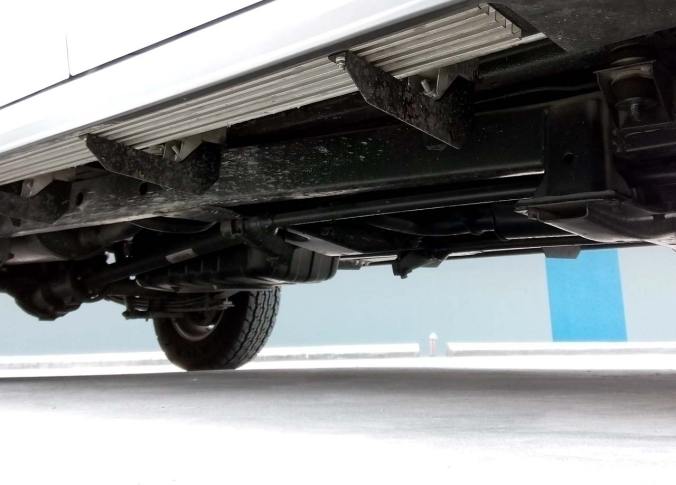
The Xenon is sparing on the flourish, has a design language that blares last decade’s practical aesthetics (which is just fine) and now stands among newer builds looking tight, compact and more sporty because of the smaller cargo deck. It really is about bulk management. Why go for a larger cargo deck when the Xenon’s tub can already carry even a king-size stood on its side and with two-thirds of its length supported underneath by the flat bed and the lowered tailgate.
Compact is always cool, particularly in the city. After all, this design from last decade is now in the running with urban-dwelling passenger trucks. A cargo deck big enough for serious hauling and not so small to make the arrangement look like those notchy rears of sport utility intermediates, that’d be fine. The Xenon looks the part: a full fledged truck moonlighting as passenger transport.
MilSpec tough
 The Xenon’s suspension is old-school tough. Up front are independent double-wishbones sprung by thick torsion bars, in the back, the familiar parabolic leaf spring sets that can be made even stiffer with the addition of more staves (or rendered softer, if that’s your fancy, by taking out some). The coil springs that big brands now use up front, and on the Philippines-spec Navarra even in the back, make no appearance and leave the Xenon’s undercarriage MilSpec durable (torsion bars are the springs of choice on military trucks and main battle tanks).
The Xenon’s suspension is old-school tough. Up front are independent double-wishbones sprung by thick torsion bars, in the back, the familiar parabolic leaf spring sets that can be made even stiffer with the addition of more staves (or rendered softer, if that’s your fancy, by taking out some). The coil springs that big brands now use up front, and on the Philippines-spec Navarra even in the back, make no appearance and leave the Xenon’s undercarriage MilSpec durable (torsion bars are the springs of choice on military trucks and main battle tanks).
Of course, the ride is bouncy when the truck is unladen, but this can be mitigated with sensible driving and some tire-pressure tweaking. Recommended unladen tire pressure is 29psi all-around, with those on the rear tires to be blown up to 36psi when hauling a loaded deck. The big but smartly upright and not bulbous 235/70 R16 tires did well at 30psi all-around on SLEX and the Star Tollway for that daytrip to Batangas. In fact, keeping these at the common 30 and not at the 34psi I had found them with, eliminated the side shimmies I’d occasionally feel on hitting small bumps. So take note: the shimmies indicate there’s room for softening, not that the tires are already spongy and flexing a bit to the sides.
The seam between passenger cabin and cargo tub is left unfettered on the Xenon. There are no rubber fillers to trick the eye or absorb vibrations in case the modular bodies flex up against each other. These said, there were no indications, no looseness and no telltale bangs that betrayed any significant flex. The Xenon, despite the torsion bar and parabolic leaf springs and their inherent constant, stiff tension, showed no signs that its frame spans were getting pounded. The whole body on frame assembly stayed firm and square. No surprise that in India the Xenon has been drafted into military service.
Sublime handling
Upstaging the typically bumpy cruise is the Xenon’s handling. The truck grips the road extremely well. Turning into a curve is sublimely predictable, the truck straddling your intended approach line as if it were on rails. While the minimized body roll may be due to the throwback torsion bars up front, these with their constant tension as opposed to the progressive force of coil springs, the exceptional handling is more likely due to the Xenon’s wheelbase geometry.
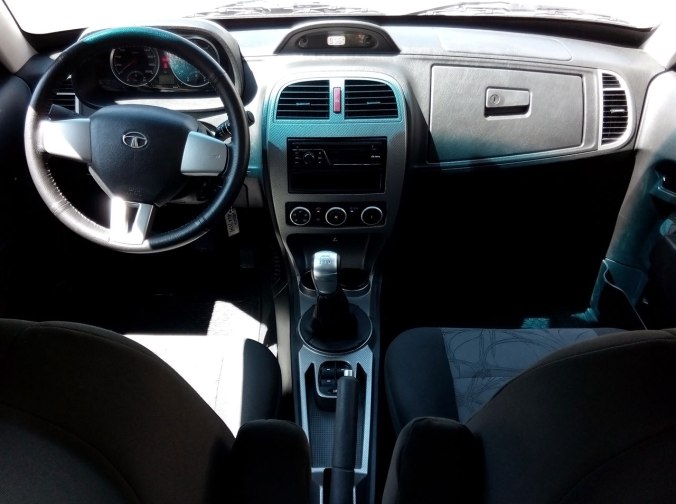
While its length is shorter than those of current generation big brand models, the Xenon has among the longest wheelbases in its class. While the Xenon is shorter than the Navarra by 13cm, the smaller truck matches the 3150mm wheelbase of the bigger one. The only longer ones are the 3220mm wheelbases on the even bigger Ford Ranger and Mazda BT-50. As such, the Xenon has the greatest wheelbase to length ratio among its big name rivals: at 61.4%, the Xenon even bested the 60% of the Ranger and BT-50. You could imagine how well this counters the centrifugal force on turns, with body overhangs tucked up and kept short.
But it should be noted that the weight distribution is ideal only when the truck is unladen. When hauling cargo, the Xenon will be rear heavy and would be more prone to lift-off oversteer, the rear tires succumbing to momentum’s push away from the turn. Not that it needs mentioning, but … best to leave off the slaloms when you’re truckin’ stuff in the, ah, truck.
Elegant power
The Xenon’s 2.2L VTT DiCor engine is a modern, refined diesel with a variable geometry turbocharger (hence the “VTT” for variable turbine technology) and precise and high-pressured common rail direct injection (as in “DiCor” for direct injection common rail). Already potent enough to deliver 147hp peak power at 4000rpm and peak torque of 236lb-ft at 1500 ~ 3000rpm (ratings that rival those of larger 2.5 and 3.0L diesels), the combination of enhancements are capped by a more recent innovation that manages and levers all that power into something altogether more elegant: smooth, uninterrupted force.

The 2.2L VTT DiCor is also the engine mounted in Tata’s Safari SUV. And in that model’s literature, they remember to mention that engine’s torque is channelled through a high-inertia flywheel. Heavier than conventional ones, a high-inertia flywheel has been made massive enough to dampen the torsional vibrations that usually come when the clutch engages at low revs, and to store the engine’s kinetic energy in the form of the wheel’s rotational inertia, its insistence on turning at the same rate even when there’s no force driving it anymore.

Honeywell Variable Nozzle Turbocharger (VNT)
The advantages in terms of keeping the turbocharger spooled up are obvious, the effect rather elegant. Instead of the near instant gear-changes on fast automatic dual-clutch transmissions to keep the engine turning at the same rate even through an up-shift, the manual transmission on the Xenon can rely on a heavy flywheel to not only linger at the same rpm but even surge up when you disengage the clutch to do a gear change.
Of course, back when I didn’t know about the flywheel, those surges were irritating me no end, making me question shift timing that took years to burn into muscle memory. Don’t despair, it’s just the friendly neighbourhood flywheel at work. Do it right, let up on the gas a heartbeat faster than with your usual timing and a hundred rpm surge when you pop the stick into neutral will be just enough for the engine to settle back down to the rpm you started with when you reengage with a higher gear. In other words, without the need to feather the gas pedal, and with just a little practice, you’ll be able to game the engine into smooth up-shifts with negligible interruptions in force and acceleration.
Even without turning into a speed demon and insisting on a spirited launch with constant, uninterrupted power driving those wheels even through gear changes, the flywheel has the effect of building up and storing enough momentum in the system to make it feel like you have a second, silent power source boosting your torque even at low revs. Roll out can be done with hardly any throttle, adding less than a hundred to the 800rpm you’d have at idle. With a light foot on the gas pedal, the Xenon can be very quiet as you accelerate for the next gear change.
Easy trukin’
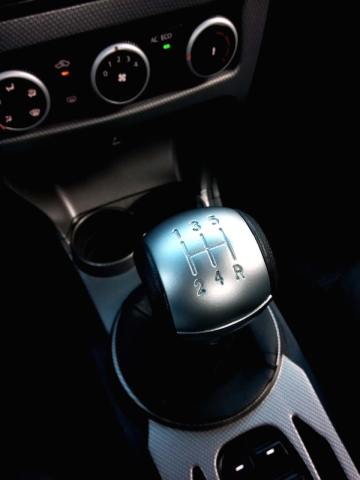 Matter-of-fact, with the flywheel storing momentum plus the variable nozzles keeping airflow and compression optimal in the turbocharger even at idle or low revs, you can drive the diesel in the smoothest way I know how: by engaging the clutch fully before even stepping on the gas, by throttling up again only when you have load on the engine, when shifting up after your initial roll-out. Don’t mind the engine revs going back down to idle during shifts. Although the engine won’t then have the energy state to leap instantly into full-burn flight, the variable geometry turbo will nevertheless keep things optimal.
Matter-of-fact, with the flywheel storing momentum plus the variable nozzles keeping airflow and compression optimal in the turbocharger even at idle or low revs, you can drive the diesel in the smoothest way I know how: by engaging the clutch fully before even stepping on the gas, by throttling up again only when you have load on the engine, when shifting up after your initial roll-out. Don’t mind the engine revs going back down to idle during shifts. Although the engine won’t then have the energy state to leap instantly into full-burn flight, the variable geometry turbo will nevertheless keep things optimal.
Driving the truck this way, calmly and like you have a full payload whether you’re laden or not, will see you shifting up at 15, 30, 50 and finally 70km/h for that last one into fifth gear, and with each shift happening around the time the tachymeter needle hits 1750rpm. Nice and calm, there’s the benefit of piloting your two-tons of truck while telegraphing both your trajectory and your intentions to other drivers on the road … a great, laid-back way of driving defensively, a good way to remain courteous, unobtrusive and not obnoxious in your big hulking hauler.
If you need additional incentive, there’s always the mileage you’d be getting. While keeping things calm in city traffic, even with a moderate sprinkling of bumper-to-bumper stretches, the two ton truck with its turbocharged 2.2 liter diesel managed 12km/l, and that’s with a full passenger load. On the highway, keeping the Xenon at 100km/h in fifth gear and at around 2100rpm got me 16km/l, again with a full passenger load. I think if stayed at 80km/l in fifth and at 1,750rpm I could’ve gotten as much as 18km/l. All told, I got readings that jived with the official numbers for the 2.2L Xenon in Australia where they put it down as having mixed mileage of 13.5km/l.
Outflanking the competition
All told, if you were in the market for a pickup truck, the Xenon’s durability, handling and powerful engine would be enough to get you interested. While, if you were really looking for a passenger car and just happened to glance at the Xenon, it’s vestigial compactness, utter versatility and that gem of an engine that can be driven calmly, comfortably and economically while holding a lot of power in reserve, all these could make you take a second look … maybe even pull a chair and go over everything one more time before settling for a sedan.
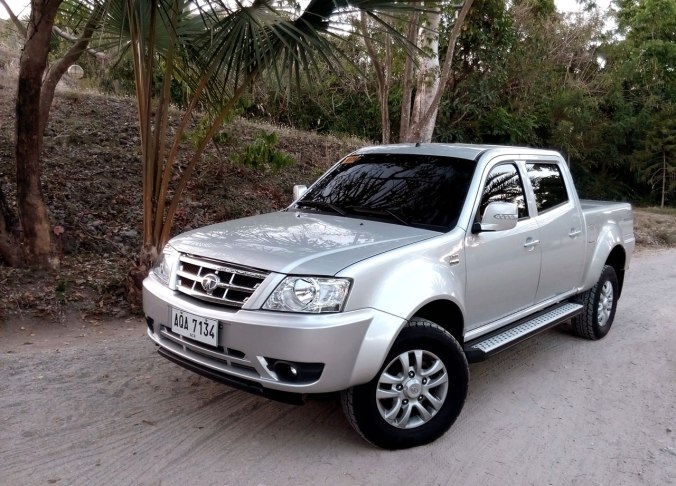
With their mere pair of Xenon variants to go up against the numerous ones from each of their big-brand truck rivals, Tata may appear like it’s vulnerable to being flanked by many and on all sides. But, considering the Xenon and the surprises it has in store for anyone who’s willing to take a gander, it really is more like them going full tilt into the truck war by shooting straight and true at the market’s center mass.
awesome review bro
Thanxss
LikeLike
Thanks man, very glad you liked it. 🙂
LikeLike
Darn tired eyes were messing with me. For a good long second I was reading the tailgate badge as “LEMON XT”. Notwithstanding, seems like a decent rig with good bang for the buck. Ought to appeal to any kid of the eighties who shared in Marty McFly’s awe when he opened his garage at the epilogue of BTTF 1. Does it come in black?
Nice, very informed story bro, keep it up.
LikeLike
Hey there G, nice of you to say brother … and that Marty McFly moment sure does mark an era, makes me wonder if there are any DeLoreans still out there. Yes, the Xenon also comes in black … they call it Quartz Black. 🙂
LikeLike
Saw a DeLorean at a used car lot along Quezon Avenue, way back in college. The gang stopped to check it out. I noticed the speedo dial ended at 80. We asked the sales guy, can this be truly so pathetic? He answered “But that’s in MPH, you know?”. oookhaaay… But the Flux Capacitor engages at 88…
LikeLike
Pingback: Tata Motors lands big Indian defence contract | Real World Drive